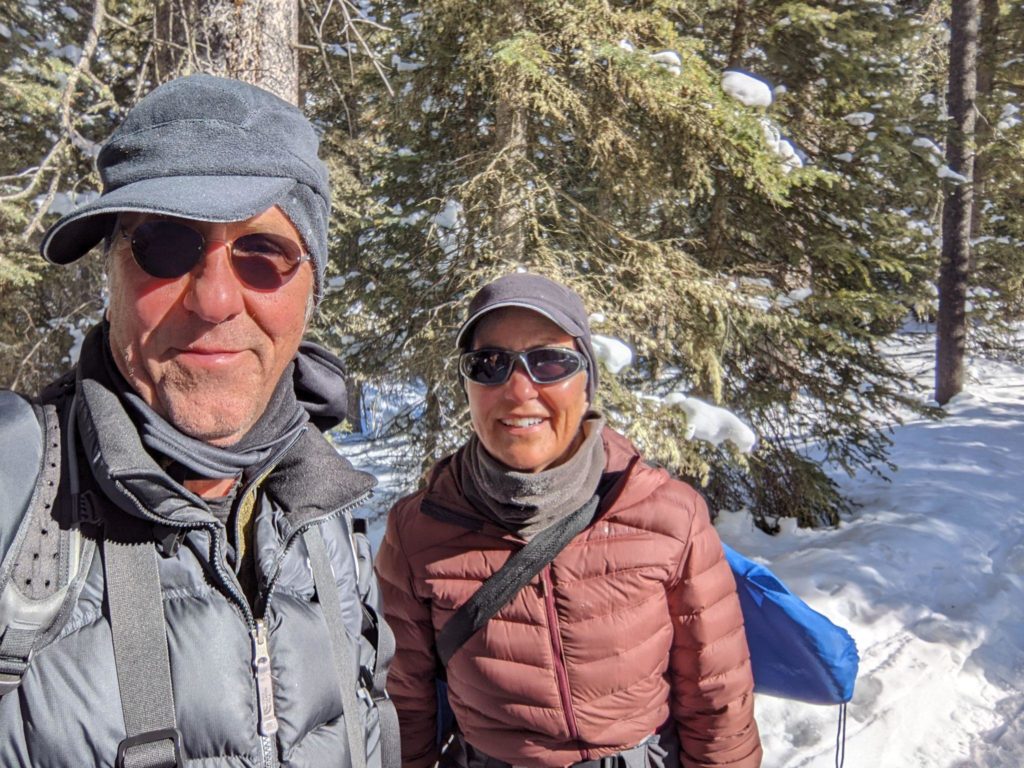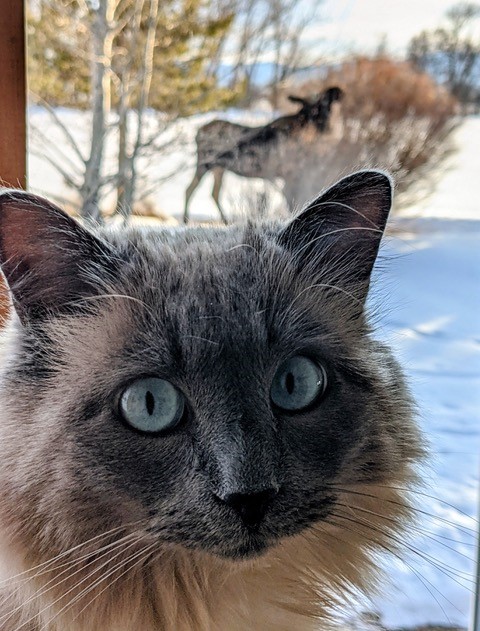By Hilary Turner
As Nature Mapping Jackson Hole nears its landmark 1000th certified Nature Mapper, I thought it would be fun to write an article featuring a couple of newer Nature Mappers who were just trained in the last year. Many of you have participated in Nature Mapping and its variety of projects since its inception in 2009, but lots of new Nature Mappers have joined our ranks recently and we warmly welcome them!

Kathy O’Neil and John Norton have been visiting their property in the Teton Valley since 2006 and finally made the area their home in 2020 after Kathy retired from a career as a physician specializing in women’s imaging radiology. John describes himself as “never having been career minded,” but had a variety of interesting experiences throughout his working years. He served in the US Air Force for 10 years, during which time he received an MS in Astronautical Engineering. After leaving the Air Force, he cycled across America, “married his best friend [Kathy],” and moved to Salt Lake City where he worked as a consultant for a variety of organizations.
Kathy loves living in the Teton Valley, a “beautiful community” where she has already become heavily involved in conservation and wildlife projects. She hopes to become even more involved, as she trains to become a certified Idaho Master Naturalist through the Idaho Department of Fish and Game, and continues her education through opportunities with the Jackson Hole Wildlife Foundation. Kathy and John both enjoy skiing, hiking, and viewing wildlife. John describes the GYE as “providing a canvas for doing all the things I love to do.”
The couple tuned into the virtual October 2021 Nature Mapping Certification Training together from their home in Driggs, ID. They heard about JHWF’s Nature Mapping program through the Teton Regional Land Trust, as well as involved friends, and immediately began participating in a variety of Nature Mapping projects. Both have submitted data to Casual Observations and Project Backyard as well as attending JHWF Continuing Education seminars and snowshoeing to count moose during Moose Day.
When asked what their favorite animals are, John and Kathy had very different, but equally beautiful answers. Kathy described her ex-feral Siamese cat Smudge, who she rescued. John’s favorite animal is any animal he is near that is undisturbed by his presence. To me, their answers are those of two conservation heroes. Through the action of rescuing a feral cat, Kathy saved not only the life of the cat, but also the lives of the many birds, small mammals, insects, reptiles, and amphibians the cat would have killed over the course of its life as a feral. John’s attempts to view wildlife without disturbing them means he values the safety of the animals on the landscape over his own self-interests such as viewing the animal more closely or getting a great photograph.

All of the Nature Mapping projects they have participated in have been fun for the couple, but they particularly enjoyed Moose Day for the organization and collective effort by citizen scientists. They were also thrilled to participate in Casey McFarland’s tracking class and other continuing education opportunities through JHWF. Together, Kathy and John have submitted more than 100 Nature Mapping observations in a little more than half a year. John’s favorite observation was of a flock of Bohemian Waxwings that he observed this winter in the Teton Valley. He described loving the sounds they made and how the flock “moved through the sky as if it was one organism, an angel.” Kathy’s favorite observation was of a moose that she found sleeping near her bedroom window one morning this winter. She described the experience of realizing they had spent the night only 15 feet apart as one she will not forget.
The couple participate in citizen science because they desire to give back to the wildlife they love. John says, “we share this planet with life forms that modern society has learned to completely ignore, abuse, and destroy.” Through citizen science, he hopes to bring more awareness to these issues. Kathy appreciates that the data she provides will “help policy makers, scientists, and the general public better understand the needs of wildlife.” Both people think that it is important for humans to share the planet with our fellow denizens “in a more respectful way.” Kathy and John are inspired to participate in citizen science because they value personal responsibility and science. Kathy, with her background in medicine, “has a deep respect for science and believes there is an immense potential for deepening our collective knowledge through the contributions of citizen science.” John eloquently states that citizen science “provides a foundation of understanding through thoughtful practices by ordinary people.”
In conclusion, John states, “life is a quilt work of experiences and Nature Mapping is one, recent, piece of the quilt that makes it bigger and warmer.” Through Nature Mapping, Kathy has learned how much there is to see when one pays more attention. When asked what they hope to get out of Nature Mapping into the future, they responded that they hope to share the experiences they have with friends and family, while “contributing to the ongoing health and resilience of wildlife in the GYE.” They each had a bit of advice for other Nature Mappers. John encourages folks to “slow down, watch, and listen,” and Kathy says, “It is valuable work. Stay engaged.”
